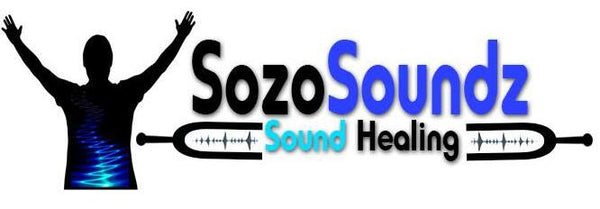Did you know when the tuning fork was invented? It was actually invented by a trumpeter and lutenist to the English Royal court named John Shore in 1711. Mr. Shore often played with composers H. Purcell and G.F. Handel. In fact, Handel owned one of these forks which today is considered the oldest known tuning fork in existence. Before this invention, musicians relied on wooden pitch pipes to tune their instruments. As humidity and temperature would greatly affect the pitch in these primitive instruments, the tuning fork became widely popular in Europe as its pitch remained relatively stable amongst a variety of environmental conditions. Musically this invention of the tuning fork played a major role in establishing international standards for concert pitch. Although we have gone through a series of evolution in what has been considered standard pitch internationally, A=440 Hz is currently the standard.
Although invented as a musical instrument, the tuning fork found some popularity in the late 19th century as a diagnostic tool for hearing disorders. We can thank some early scientists for their experimentations which aided in a greater knowledge and use for this instrument. The first notable scientist to mention is Ernst Chaldni (1756-1827) from Germany. He was the first scientist to experiment with tuning forks. His famous method revealed patterns of vibrations on vibrating objects. He was also the first scientist that was able to demonstrate the connection between sound and waves. His work on vibrating plates, rods and tuning forks was remarkable even by today’s standards. You can see any modern example of this technique by viewing any cymatics videos on Youtube. In the original experiment, Chaldni used a metal plate with sand on it. The plate was then bowed with a violin bow. Chladni was able to conclude that sound travels in waves with his experimentation. The places where the sand did not collect showed how far sound waves moved the sand. The places where the sand did collect represented the nodes between waves.
Other notable scientist were:
Johann Scheibler (1777-1837) who invented the tuning fork tonometer, comprised of 56 engineered tuning forks he used to tune pianos to 440Hz the global standard now known as Stuttgart pitch.
Jules Antoine Lissajous (1822-1880) who was commissioned to create a standard tuning fork at 335 hz. In this process, he invented an optical method for calibrating tuning forks using so-called Lissajous figured which was later used to calibrate television transmissions in the 20th century.
Herman von Helmholts (1821-1894) who invented the first sound synthesizer to demonstrate his theory about the complex nature of speech and musical sounds.
Rudolph Koenig (1832-1901) who perfected the tuning fork and in doing so, added a great deal to bring experimental acoustics into the mainstream of physics.
It was other physicist, scientist, and physicians that led to further discoveries of this instrument which aided to its induction as a medical instrument. E. Schmalz and otologist from Dresden Germany introduced the tuning fork test in otology in 1845. He was the first to claim the diagnostic possibility of using a tuning fork. Others such as J. Tondroff furthered Schmalz theory by giving detailed explanations of the working mechanism of bone conduction hearing.
Today, the tuning fork is gaining even more momentum as we discover even more capabilities of this remarkable instrument. It is used to great degrees in music, science and medical fields. In the medical field, tuning forks are not only used to check hearing loss, diabetic neuropathy, and the nervous system, it is also gaining momentum in the alternative medicine modalities. While the sound affects the auditory system and nerve which is extensive, it also affects the body’s energy systems. It has been discovered that the imbalance on one’s energy field can result in blockages in the spiritual, mental, emotional and physical areas. Many times these blockages can result in illness when the issues are not addressed. In fact, we store trauma at the cellular level in the form of an energy pattern. Tuning forks can be used to find the blockages and aid in balancing these areas. Often times, clients report a significant change in one or more of these areas. The weighted tuning forks, also known as Otto forks, are used for relaxation as the sound vibrates into the bones and aids in the spiking of Nitric Oxide. Per Dr. John Beaulieu, “Nitric oxide is made inside the vascular, nerve and immune cells and is rhythmically released into the surrounding tissues as a gas. It participates in the healthy functioning of all main organ systems and acts as a signaling molecule and attacking molecule neutralizing viruses, bacteria, and other free radicals.” Weighted tuning forks are also used as in acupressure to bring relief to various areas of the body.
As a Sound Therapist, I have seen some remarkable improvements in my clients. As I am also a recipient of these frequencies, I have also experienced some healing to different degrees. Many times I have used these forks on myself to bring down inflammation from my arthritis. I have also noticed emotionally that issues that used to really bother me no longer do. While the frequencies themselves bring a great measure of healing, I have found that if I start and end with verbal or non-verbal prayer, the healing increases. I always set my intent believing that our Savior came to set the captives free. By His stripes we were healed! One can never underestimate the power of prayer.
I started this website in the hopes to see increased healing in the body. While many in the business are selling a product for financial gain, that will never be my priority. If you end up buying and using a set of the tuning forks offered here, I hope to hear about your healing testimonies. I would encourage you to get a set of tuning forks and start on a new healing journey. Happy Tuning!!!
